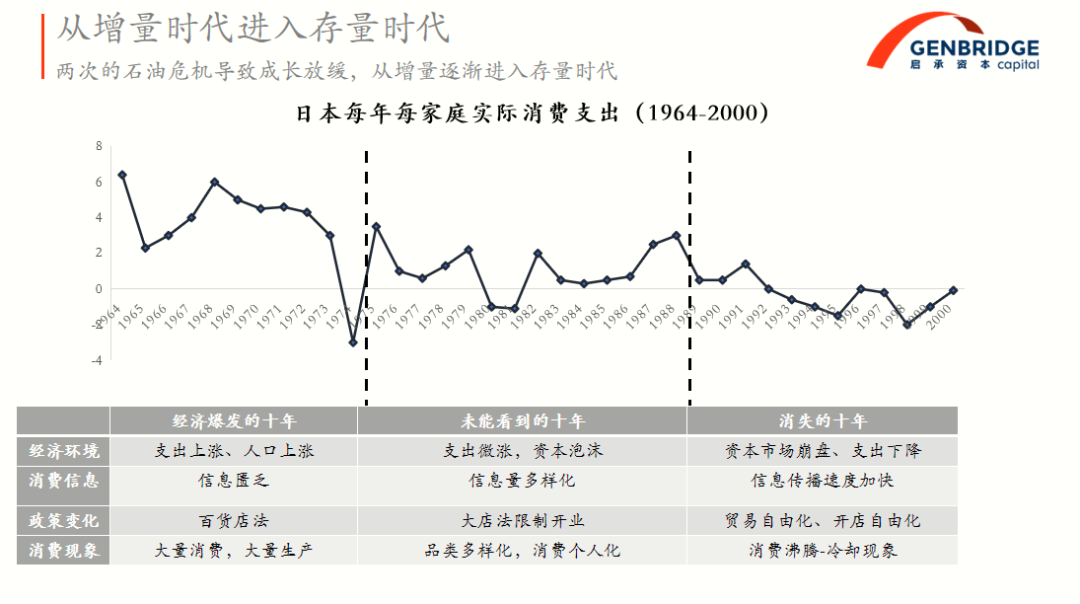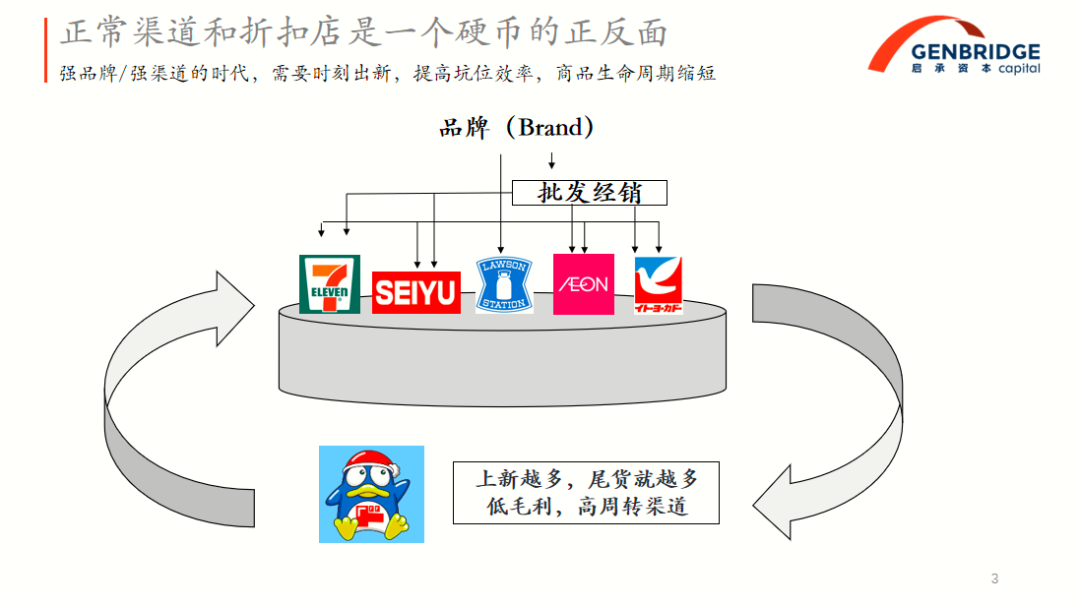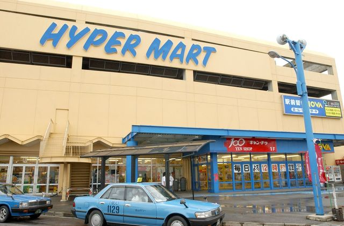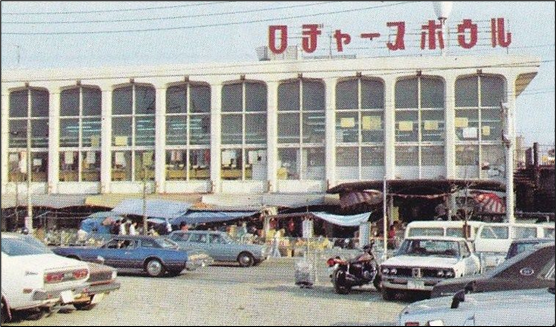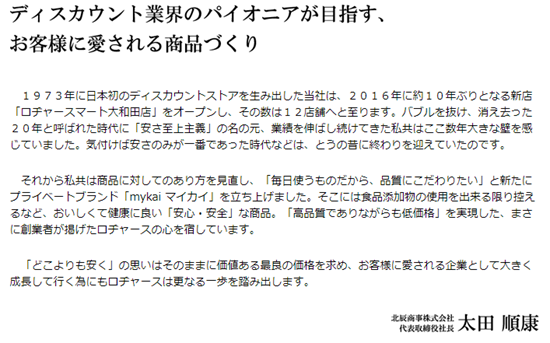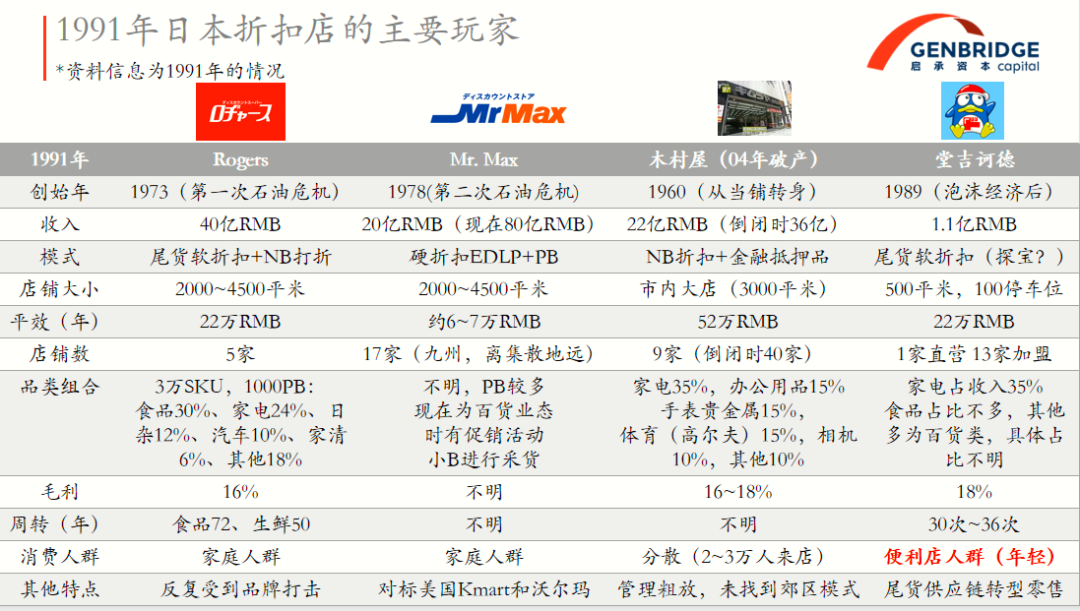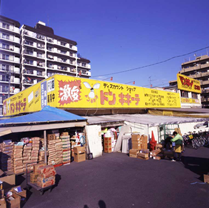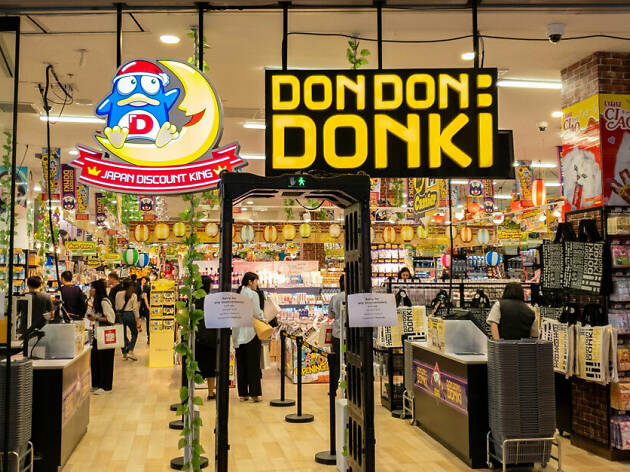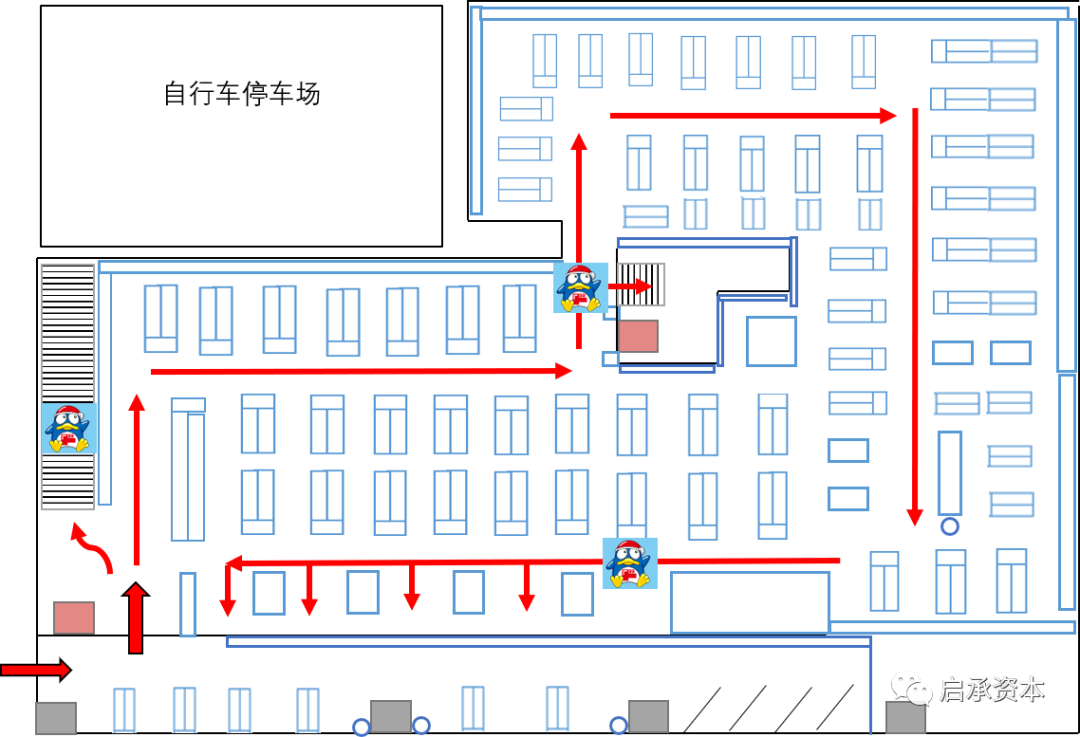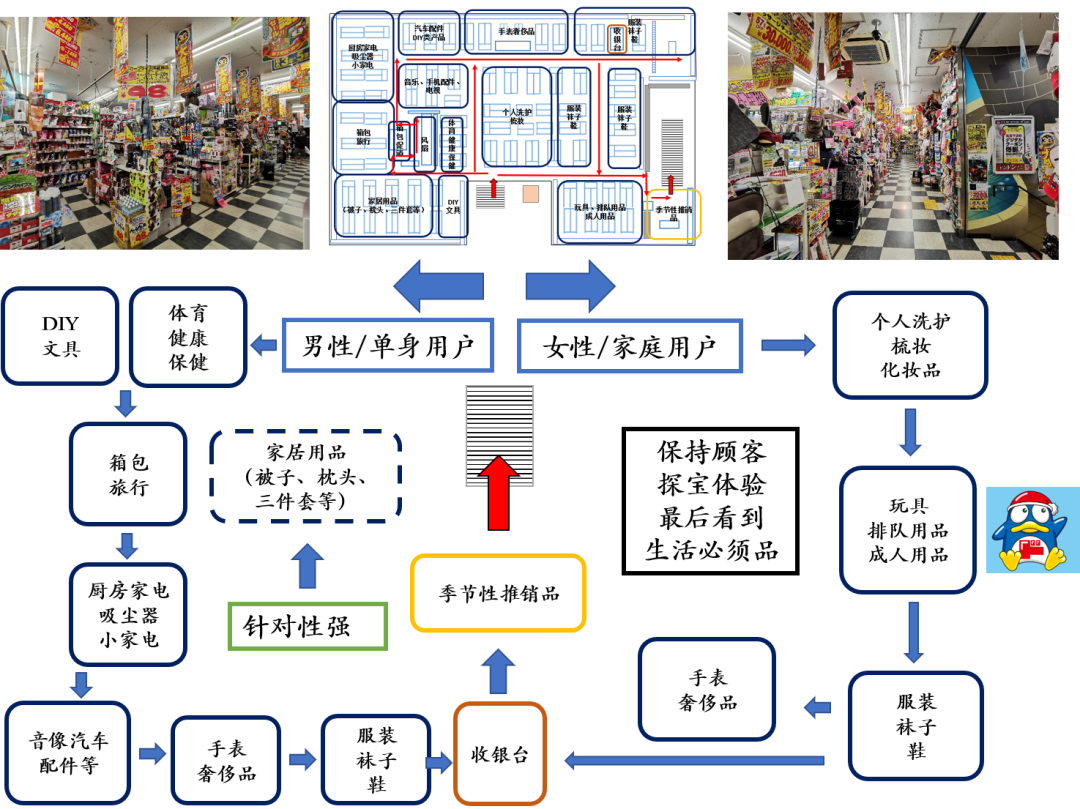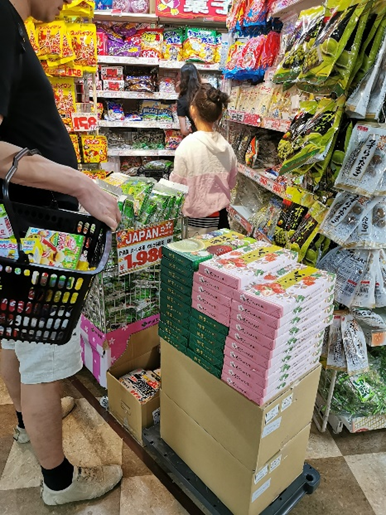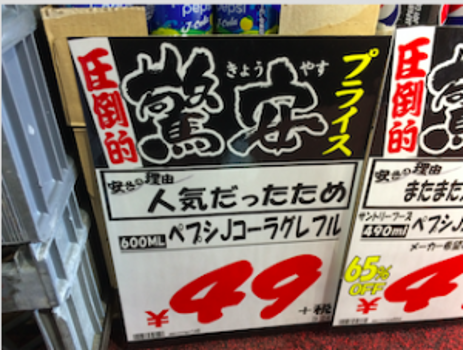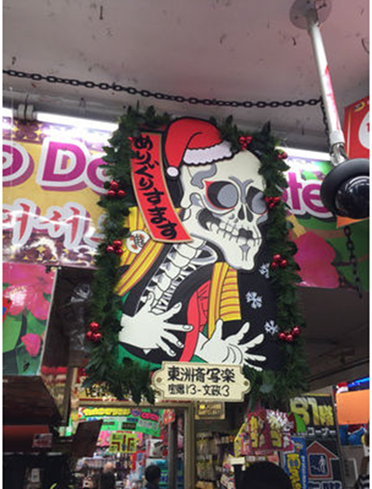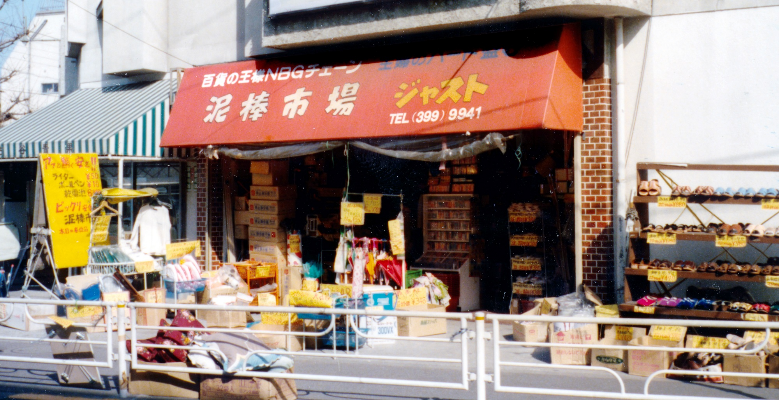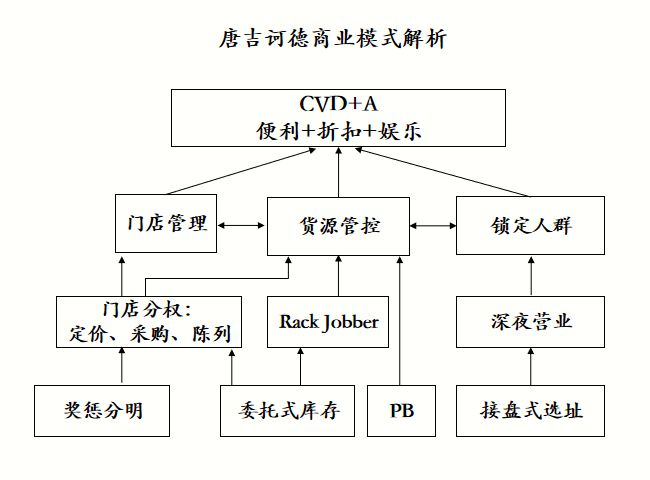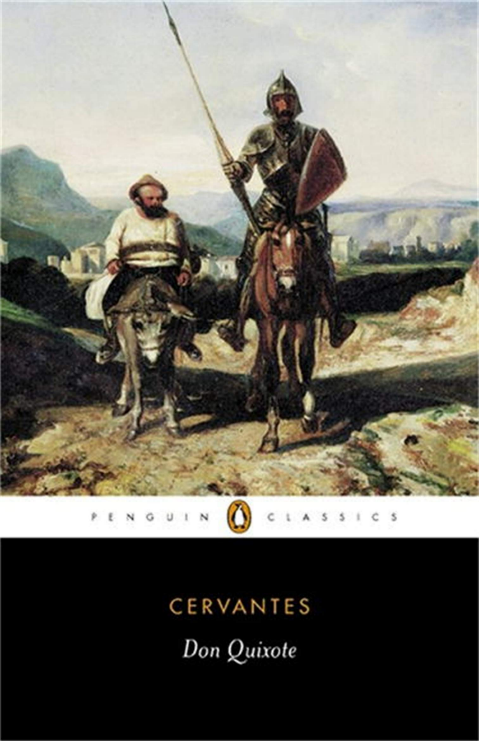Commodities are discounted, but the market does not discount.
Author: Tojiro Kataya
Production: Qicheng Capital
The growth black box not only studies the development of new online consumer brands, but also continues to pay attention to the laws and changes of offline retail formats.
Recently, our old friend, Tojiro Kataya, a researcher of Qicheng Capital, deeply analyzed the era background, business logic, and application characteristics of the Japanese retail giant-Don Quixote discount store. He conducted a large number of data searches, on-site shop visits, and interviews with a number of Japanese retail experts to produce this research of more than 10,000 words.
We thought it was very good after reading it, and I would like to recommend this article to everyone to see how he cuts into the development of the discount store industry from a macro perspective of Japanese retail, and decodes the winning strategy of the king of discounts in Japan.
The article is very long, but there is a lot of dry stuff, it is worth your time to read it patiently!
In 2020, Don Quixote (group name: Pan Pacific International Holdings) has 800 stores and 1681.9 billion yen in revenue (approximately 100 billion yuan), becoming the fourth largest retail company in Japan by revenue.
Different from the European and American discount formats such as Costco, Aldi, Wal-Mart, etc., which achieve price advantages by reducing SKUs and low operating costs, Don Quixote has adopted a fully-directed store with 3,000 square meters or more and tens of thousands of SKUs densely displayed. The mixed sales model of 30% low-price tailings + 70% regular price discount gives consumers the impression of a rich selection of cheap prices.
The success of the Don Quixote model is due to the matching between its capabilities and the particularity of Japanese retail circulation. This article will cut into the development of the discount store industry from the macro perspective of Japanese retail, and try to decode the winning strategy of the king of discounts in Japan.
This article will focus on five major issues:
1. What structural environmental changes made Don Quixote?
2. Why did the contemporary discount store players fail to succeed?
3. What are the special abilities of Don Quixote and the logic behind it?
4. How does Don Quixote manage stores and purchases internally?
5. Summary and outlook.
Question 1:
What structural environmental changes made Don Quixote?
Don Quixote was founded in 1989 on the eve of the burst of the bubble economy. Its growthAfter helping Japan’s economic bubble, the macroeconomic decline and consumer price sensitivity trend. More precisely, Don Quixote has grasped the variables under the shift from the incremental era to the stock era. These variables are: a. The explosion of the number of new commodities, b. The information explosion and the shortening of product life cycles, and c. The rise of convenience store channels.
Variable a: the explosion of new products under stock competition
We must first start with Japan in the 1980s. In the 1980s, people were engraved with the “bubble economy” brand, but under the surface of the bubble, invisible changes have taken place. The bubble economy has pushed up housing prices and stock prices, and the market for high-end luxury goods, imported cars, and high-end villas has reached its peak, but in fact, the consumption level of ordinary people has not increased significantly. During the ten years from 1980 to 1989, the annual growth rate of actual consumption expenditure per household was about 2%, which was far lower than the 4% to 5% of the previous decade.
The reduction in economic dividends has forced consumer product brands to strengthen category expansion and new product research and development to maintain corporate income growth. For example, in the late 1980s, Nissin Foods adopted organizational reforms to increase the brand matrix and increase the turnover speed of the value chain, so that the new speed increased from 4SKU per year to 600SKU per year. This phenomenon is similar to China’s current explosion of new Shanghai and the brand’s massive SKU testing method. In order to maintain growth, give up profits and give priority to income.
Variable b: Information explosion and shortening of product life cycle
The heyday of consumer culture in the 1980s also brought an explosion of consumer information. Japanese scholar Yamazaki Kazuo is analyzing in “The Birth of Soft Individualism-The Aesthetics of Consumer Society” that modern consumers are not only consuming products, but also consuming information about consumer products and participating in the production of information. If the secondary industry is a struggle between man and nature, then the tertiary industry is a game between man and man. The focus of the retail industry has shifted from production and circulation to consumption itself. Echoing this is the number of magazine media that have sprung up like bamboo shoots after a rain. The number of magazines in Japan rose from 2,319 in 1970 to 3,225 in 1980. There are several magazines in each segment, and each magazine contains amateur KOLs who produce consumer information from the perspective of consumers.
In the 1990s, this trend not only continued, but also added another attribute: the acceleration of consumer information dissemination. This attribute is inseparable from the development of digital media. The emergence of multimedia information platforms such as mobile phones has increased the speed of information dissemination. This attribute greatly shortens the product’sLife cycle. A product suddenly became a topic product through a certain media channel, and a “boiling phenomenon” appeared, but the heat was completely “cooled down” after 2 weeks. The normalization of the “boiling-cooling” phenomenon has made many brands see the enthusiasm for hurriedly put into production, but when the goods arrive, they have become compact goods.
As Marx said in Critique of Political Economy, the value of commodities will only be verified after they are converted into currency at the last minute. This step is called “the thrilling jump of the commodity.” In the environment of a capitalist market economy, no one can guarantee that the products produced can successfully jump. The emergence of “boiling-cooling phenomenon” adds new difficulties to “jumping”. The explosion and acceleration of information has led to the shortening of product life cycles, testing the front-end marketing and back-end supply chain capabilities of all brands.
Variable c: With the rise of convenience store channels, it is getting harder and harder to grab pits
The success of the convenience store model lies in efficiency, which depends on the output of each pit. The number of convenience stores in Japan rose from 7,060 in 1987 to 29,144 in 1995, and their influence in the Japanese retail industry continues to expand. Therefore, in order to compete for the pit of convenience stores, brands have to always launch new products from the perspective of new materials, new flavors, new packaging, and new craftsmanship. On the one hand, it attracts the attention of consumers, on the other hand, it has a game with channel parties. This is why we often see a lot of “seasonal limited edition” products in Japan.
The Japanese convenience store channel is a testing platform for new products. According to the original family executives, only 3 out of 100 new products can survive the next year. There will be 20 new SKUs in the zero food category every week. If the sales do not meet expectations, the convenience store will take them off the shelves within 1 to 2 weeks and return the remaining products to the brand or the middleman. In recent years, Japanese convenience stores have strengthened their respective Private Brands, and developed products of higher quality than National Brand from the perspective of demand. This allows Japanese local brands not only to face competition between brands, but also to confront the channel’s high-margin Private Brand. The three variables introduced above are interlinked. In the Japanese market with low ceilings, consumer goods brands need to constantly test new products in order to increase their income. On the one hand, the brand conducts marketing through topical new products to attract the attention of consumers, and on the other hand, it actively engages in the game with the channel parties to obtain valuable pits on the shelves of convenience stores. The nature of the logic of competition in the stock market has led to a substantial increase in the number of new listings.
But as mentioned earlier, only 3 of 100 new products can surviveNext year, the remaining 97 will be defeated. A knight wearing a flashing armor holding the banner of victory passed through the city gate, but there were countless bloody dead bodies under his feet.
Where have all these dead bodies gone?
Don Quixote is their outlet.
The more new mainstream channels are available, the more tailed goods in the whole society, and the more tailed goods, the more supply of discount stores. Don Quixote is a company born based on the characteristics of Japanese retail. It is the “shadow” of the Japanese retail industry. The bigger the sun, the bigger the dark.
Question 2: Why did contemporary discount players fail to succeed?
Looking at the success of U.S. discount store companies such as Kmart, Wal-Mart, and Costco from the other side of the Pacific Ocean, the Japanese retail industry has been interested in discount store formats since the 1980s, and all companies are actively exploring creating Japanese star discounts. Opportunity to shop.
These companies can be roughly divided into two modes: hard discount and soft discount:
Hard discounts are similar to the US discount store model. By reducing SKU and operating costs, building vertical supply, launching Private Brand, and reducing the retail price of the channel.
Soft discounts are used to achieve ultra-low prices and obtain the first passenger flow through the sale of off-the-shelf goods, box-loaded goods, and financial collateral, based on the lack of the product itself.
1. Hard discount competitors: Dayong, Wal-Mart, Carrefour
The first standard bearer of the hard discount model is the Daiei Group, the king of retail in Japan. From the 1960s to the early 2000s, the company has been the number one retail company in Japan, with group revenues of 300 billion yuan at its peak. The founder, Zhong Nei Gong, is a follower of the American retail model. He believes that what happens in the United States will also happen in Japan. Therefore, betting on the discount store track began in the 1970s. Dmart was established in cooperation with Kmart, Kou’s was established against Costco, Hypermart was established against Wal-Mart, and Aldi was established against Aldi.BIG-A was established. However, all of the above business types have failed one after another, becoming the deficit business that caused the loss of the Dayong Group. There are several reasons for the failure of the hard discount model:
1.1 Consumption is not only shopping, but also entertainment
Hard discounts often sacrifice the shopping experience in order to reduce costs. The shop decoration is simple, making the shopping process boring. Single-core family consumers will not take hard discounts as a destination for shopping with their children on weekends. For example, in the 90s, Hypermart’s men’s toilet did not have a urinal in order to save costs, but replaced it with a stainless steel iron plate (similar to an old-fashioned public toilet).
1.2 “Buy more goods” when buying things
Japan has a high concentration of cities and the distance between channels is close, so consumer mobile costs are low. Each channel will launch different drainage models for a limited time every day to attract consumers to purchase. Consumers have developed the habit of “buying more goods”. The hard discount model often hopes that consumers can shop in one stop and increase the customer unit price with low gross profit. But this does not match Japanese consumption habits.
1.3. Insufficient production capacity makes it difficult to achieve vertical supply
The important point of hard discounts is the launch of Private Brands. However, as shown in the figure below, Japan’s production utilization rate is always in a state of insufficient, exceeding 100% (the excess is made up by the 996 culture). Manufacturers will only accept orders from channels during the downturn, and will refuse to produce private brand orders with too low gross profit once the economy recovers. This makes it difficult for Japanese channels to launch cost-effective Private Brands for a long time.
After 2000, Tesco of the United Kingdom and Carrefour of France both entered the Japanese market to promote the discount store model, but both withdrew from the Japanese market within a few years. Wal-Mart entered through the acquisition of Xiyou Supermarket and transformed it into a discount store model, but since the acquisition, Xiyou has not seen significant growth except for a slight increase in profits. The European and American hard discount model is difficult to take root in Japan.
*Costco has achieved greater success in Japan. Costco did not make localization adjustments in Japan, and insisted on its own model. In the end, Japanese consumers learned how to use Costco. The housewives drove together to purchase, and multiple families shared the oversized packages to get the most affordable price.
2. Soft discount competitor: Rogers
The early soft discount model is moreThe business model is more like a sale. Through the sale of off-the-shelf goods, compressed box goods, and financial collateral, ultra-low prices are achieved on the grounds that the product itself is insufficient. Before the birth of Don Quixote, there were also many soft discount players in Japan. The most representative one is Rogers, which was founded in 1973 during the Japanese oil crisis. Rogers took advantage of the decline in the oil crisis, bought the stocks of middlemen and brands, and sold them at low prices, gaining the first point of growth. The early shops were mainly converted from bankrupt bowling alleys (pictured), filled with tens of thousands of SKU products. Five stores were opened in the suburbs of Tokyo. In 1991, the company’s annual revenue reached a staggering RMB 4 billion.
But Rogers, who has the advantage of being a first-mover, failed to open stores on a large scale, break into other parts of Japan, build its own supply chain and operating system, and become the leader of this industry. After decades, it still maintains more than a dozen. The size of the store. This reason can be seen on Rogers’ official website: “We are the first discount store in Japan established in 1973. We opened a new store ten years later in 2016. There are currently 12 stores. After the end of the bubble economy, In 10 years, we have continued to grow with “low-price firstism” as a selling point, but our performance has encountered a big bottleneck in the past ten years. Slow down the era of low-price firstism. It’s over…(slightly omitted)…We maintain the attitude of “being cheaper than everywhere”, but pursue “finding the highest value at low prices”, and further grow and progress in order to become the consumer’s favorite company.”
In his research on discount store formats, Japanese retail scholar Shunichi Atsumi satirized:”Soft discounts are difficult to manage and operate because of the instability of the supply chain. The ones that are easy to sell are sold quickly, and those that are not easy to sell can accumulate dust. Shops tend to become “garbage dumps”. Consumers are not loyal. The workload is large, and the boss may make a small amount of money, but the enterprise is left with fatigue in the end.”
Although Rogers, a soft discount store, has made a good deal through low-price tailings sales, but due to the instability of tailed products, it has not been able to establish a solid supply chain and management capabilities and expand into a national channel. Selling problematic things cheaply and gaining growth is a natural result, but this has become an insurmountable challenge for this model.
To sum up, hard discount players tend to ignore the cultural and social attributes of consumption, and insufficient production capacity makes it difficult to supply Private Brand; while soft discount players are prone to unstable supply chains and unable to scale, and stores become a garbage dump.
Question three:
What are the special abilities of Don Quixote and the logic behind it?
Since the success of Don Quixote’s discount format has benefited from the large supply of tailings brought about by Japan’s inventory competition in the 1980s. At the operational level, Don Quixote’s extreme operation strategy is the key to its ability to seize the opportunities of the times. The most prominent one is the “treasure-exploring experience” sung in the infinite loop theme song in the store.
“First come, first served, dream world. Don Quixote is easily addicted to Don Quixote. After buying it impulsively, but feeling earning. It feels like a treasure hunt. What can I find tonight?”-Don Quixote Hede theme song
The so-called “treasure-exploring experience” is essentially based on the precise grasp of consumer psychology to design refined displays, moving lines and interactions. Next, based on the in-depth observation of Don Quixote’s Tokyo Metropolitan Fuchu store, we summarized the five things he did right on the store operation side: dense display, movement planning, crowd segmentation, emotional interaction, and explosive thinking.
1. Intensive display: bombard consumers with a large amount of product choices and information, and weaken their rational thinking when shopping
Last century 80In the 1980s, the Japanese consumer society was fully mature. Under the background of material redundancy, consumers have fallen into a kind of “confusion”-people no longer know what goods they really need, so they are always looking for and questioning what they really want.
The Japanese semiotic scholar Hideki Ishida analyzed in “The Knowledge of Signs/The Knowledge of Media”:
“The desire to consume seems to come from consumers, but it actually comes from businesses or the entire consumer society. The desires created through media tools are intertwined, and the subject of desire does not exist.”
This “confusion” of consumers can also be corroborated by data: A large-scale survey conducted by the Japan Institute of Circulation Economics in 2013 found that most consumers shop first, then buy, and leave the store. Shi would carry things that he hadn’t planned to buy. Even in supermarkets, drugstores, and convenience stores with strong intentional consumption, unplanned purchases have reached 77.4%, 63.8%, and 63.2% respectively (as shown in the figure).
Don Quixote has captured this state of consumers, choosing to use large venues and massive merchandise displays to provide consumers with a vast “treasure hunting” space. Consumers are submerged in the material sea. So that I forget my original shopping purpose.
(Massive product selection and intensive display)
In addition, intensive display will also make consumers tired of choosing and weaken the logical thinking process of product purchase. According to research conducted by Kathleen Vohs, professor of consumer psychology at the University of Minnesota Business School, consumers are prone to fatigue and give up logical thinking when they repeatedly see a large number of product choices. Compared with rationally and cautiously comparing prices and choosing products, consumers are more inclined to do “quick thinking” and choose products with happy attributes. For example, high-calorie snacks, cute and interesting packaging, etc.
2. Line planning: extend the stay time, display high and low gross profit interspersed with each other to strengthen the impression of low prices
In Japan, most retail channels other than Don Quixote have matured, and the store space has become more and more orderly. In contrast, Don Quixote’s store seems “disorganized” and does not meet retail standards, but in fact it does not violate the rules of movement planning, namely:
Customer unit price=channel quantity✖channel entry rate✖product retention rate✖product purchase rate✖number of purchases✖product unit price
In the case store we visited in depth, the seemingly messy display is actually quite mysterious. The first floor covers an area of about 1,500 square meters, and mainly sells fresh food, daily necessities, groceries, seasonal sales and other high-frequency consumption categories.
The main aisle on the first floor is a one-way street, deliberately lengthening the moving line to force consumers to see more shelves
(First floor display area map)
From the point of view of the order of movement lines, after entering the first floor of the mall, consumers will see in turn, ultra-low price anchor products (mainly home cleaning products) → seasonal high-margin products (such as swimsuits, water guns, swimming rings, etc.) →Intermediate-frequency household consumables (such as tableware)→Personal care and make-up→Household goods→Food freshness→Beverages→Rice paper and other large-packed must-buy items.
High-margin, low-frequency consumer goods subsidies, low-margin, high-frequency consumer goods, mixed gross profit model is the basic sales method of large stores. Don Quixote anchored products with ultra-low prices, giving consumers the impression that the channels are cheap, but interspersed with the display of high-margin products to stimulate additional consumption.
For example, seasonal products try to arouse people’s yearning for summer outings, camping and sea pursuits. Consumers are often not sensitive to the price of such products. They are prone to impulsive consumption under strong emotional orientation, and these “inadvertent” “The purchase brought Don Quixote a high gross profit.
Summer outing theme display: In front of the shelves with outings written on the top, it is filled with outdoor products, toys, barbecue props and other products in outing scenes, so as to arouse the needs of consumers
The food, alcohol and other categories that consumers purchase for purpose are placed in the second half of the line. Often the essential items such as rice that need to be purchased the most are placed near the checkout counter, and consumers pushing carts will be able to see them at the end.
It is worth mentioning that about 35% of Don Quixote’s discount store business comes from food sales, and the remaining 65% comes from household appliances, daily miscellaneous goods, sports goods, clothing and other categories. Food has the characteristics of difficult management and low gross profit. Many discount stores in Japan, Europe and the United States will not actively sell food categories in the early stages. Food categories have a certain drainage effect, but the overall gross profit contribution of the business still needs to rely on categories other than food.
3. Crowd segmentation: Separate the crowds by category display, guide the “customized” movement, and increase the density of products that arouse the interest of the crowd
The second floor of the store mainly sells non-food items such as cosmetics, sporting goods, clothing, luggage, etc.Category of products. The display categories on both sides of the shelf at the entrance are highly guiding, automatically dividing the crowd, allowing consumers to see products that may be of interest with a higher probability on each moving line.
(Motion line diagram on the second floor, the crowd has a clear tendency to divert)
For example, male users and singles tend to go to the left. This moving line displays in order: sports health, DIY stationery, travel bags, small household appliances, auto supplies, luxury watches, clothing, and cashier counters. Female consumers and household consumers will be more inclined to turn right, displaying in turn: personal care and cosmetics, small beauty appliances, children’s toys, clothing and shoes, luxury watches, and cashier counters.
Sometimes the aisle will deliberately seal one side of the road with small shelves, or deliberately allow consumers to make detours, bringing a treasure hunting experience and arousing consumer curiosity. As shown in the picture below, the dad standing outside the small Duitou is holding the shopping box in his hand. The girl inside is choosing the snacks she likes and putting the selected retail in her dad’s basket.
4. Perceptual interaction: Use vivid copywriting tags to awaken consumers’ awareness of the value of goods, and actively communicate with consumers like a live broadcast
Don Quixote’s internal slogan is, “If you buy cheaply, sell at a higher price. If you buy more expensive, sell at a lower price.” In other words, products with widely recognized value should be sold cheaper than others. For products whose value is not widely recognized, it is necessary to dig out higher value and convey it to consumers. The dazzling array of vivid labels is one of Don Quixote’s means to achieve strong interaction with consumers. Compared with the mechanical display of product names and prices, Don Quixote’s labels are as diverse as a barrage:
The magical use of tags A: happy comedians
In order to reduce consumers’ vigilance on discounted food and improve the experience of treasure hunting, Don Quixote will mark “reasons for low prices” on some special products. The sales staff at the store will use “jokes” to gain consumers’ understanding.
“I have stepped on this pit, everyone bargain-hunting”
“Have been brilliant”
The magical effect of label B: sincere explanation, enhance trust
In order to eliminate consumers’ concerns about low-priced products, Don Quixote will sincerely introduce the reasons for the low prices of products in categories where quality is prioritized such as fresh food.
“I bought it myself from Datian Wholesale Market today, so it’s very cheap!”
The magical use of tags C: Say important things three times
Price is sometimes like temperature. Expensive and cheap are a kind of “physical feeling”, not an absolute objective value. A single label with promotion may not seem cheap enough, but Don Quixote will put a large number of labels, repeatedly emphasizing the low price of the product. Slogans such as “refund if you cost a dollar” and “absolutely guaranteed low prices” were posted everywhere in the channel, which created a lively atmosphere and deepened consumers’ impression of the channel.
(Repeated bombing of massive tags)
The use of label D: convey clear product value
The fact that the unfinished product has become a compact cargo does not mean that the product is not good enough, but the value of the product has not been clearly conveyed to consumers. Don Quixote will actively seize the opportunity of such products and tell consumers the characteristics of the product through the words on the label.
The picture shows an uncommon instant oden. The net content is 860 grams, the price is 17RMB (members with discount coupons are 14RMB), and the price is about 30-50% of the convenience store. The label POP reads: “Oden with eggs, you can eat it only by heating. It is easy to store, simple and convenient, and can be used for food. One key three links~!”. The label repeatedly tells consumers the value of this product
The use of label E: “Tang Goose” that reduces the cost of communicating with consumers
The “Don-Pen” penguin cartoon can be seen everywhere in Don Quixote’s stores. The penguin cartoon is flexibly used everywhere in the channel store, so that the channel can be transformed into a cute cartoon image, which reduces the consumer’s Communication costs. This lovely image not only allows consumers to take a few more glances and stop to take a picture, but also allows consumers to quickly capture the value of this product.
Each store will have 1 to 3 shop assistants who can paint, hand-painted parts of Tang goose and labels. Therefore, the Tang Goose in each store looks a little different
Moisturizer shelf, painted Tang goose with dry tongue
On the shelf of lemon snacks, there are painted Tang gooses with their mouths sour
5. Explosive style thinking: visually present the price comparison between products, guide consumers to choose, and create Explosive products
The emergence of explosive products is undoubtedly a growth accelerator for both channels and brands. Channels obtain greater purchase bargaining power and higher gross profit. For consumers, good products will give them a reason to come to the store for repurchase, which has also become a stable passenger flow for the channel for a long time.
In the interview, a former Don Quixote Gao emphasized: “The general retailer’s way of thinking is that if a pit sells 5000RMB a month, the monthly sales of a shelf with 50 SKUs may be 25. Ten thousand RMB. But our thinking is different. We try our best to make the sales of a pit place reach 500,000 RMB, and use the comparison between the products, the label and the slogan to bring out this single product. Use the same logic on the same shelf Try to hit as many explosives as possible.”
In the picture above, the price of Nestlé instant coffee on the right is about 45RMB/180g, while the imported white-brand coffee on the left is 13RMB/100g. Compared with National Brand’s Nescafe, the price-performance ratio of imported white-brand coffee is obvious. This white-brand coffee may be the high-margin product Don Quixote wants to sell most. This product may be a bulk purchase, or it may be a PB product (but don’t paste Don Quixote’s name) found in the supply chain.
In the era of material saturation, consumer desire does not come from consumers, but from the creation of the consumer society as a whole, including businesses. On the one hand, Don Quixote uses intensive display and refined dynamic design to dissipate consumers’ rational purchasing consciousness; on the other hand, it uses label design with strong interactive attributes and strong emotional communication to awaken consumers’ perceptual purchasing desire. Under this combination boxing model, Don Quixote provides not only a physical space store, but also a tropical rain forest with rich experience, which continues to bring consumers a full experience.
Question four:
How does Don Quixote manage stores and purchases internally?
We believe that the treasure hunting experience is one of the core values that Don Quixote creates for consumers. Its essence is to design refined displays, moving lines and interactions based on the precise grasp of consumer psychology, so that consumption Visitors are immersed in the treasure hunting experience, encountering fresh products, seeing surprising prices, and buying favorite products.
The unique value of an enterprise lies in CVD+A, CV=convenience, D=discount, A=Amusement.
Behind the realization of this value is the corporate ability and business logic that Don Quixote founder Takao Yasuda has explored over decades. In the internal sharing meeting organized by Qicheng Capital, the former Don Quixote special adviser repeatedly emphasized a core thinking:
“In the offline retail competition in the stock market, only by winning the hand-to-hand battle between stores can you have a chance to win the battle of positions and achieve greater success in supply chain, marketing, logistics and distribution. Advantages.”
Next, based on the previous content, we will look at Don Quixote’s business model, analyze its operational characteristics and the methods to continue winning battles. To this end, we have divided the capabilities of Don Quixote into the following three parts: crowd locking, supply control, and store management. We believe that the dynamic combination of these three abilities has contributed to the development of Don Quixote.
Figure 1 Don Quixote’s ability can be divided into three parts
1. Get high-quality site selection at low prices, Deep night economy locks the crowd
The first step to Don Quixote’s success is to avoid direct competition with other soft discounts and formal retail channels by using clever positioning. Don Quixote has gained his own consumer group through the late-night economy: most stores account for 30%-40% of sales after 8 o’clock in the evening. Shops in many cities are open 24 hours a day.
These late-night consumers are single young people, couples, white-collar workers who just got off work, and blue-collar service workers who wander the streets at night. Their consumption behavior is like the protagonist in “The Lonely Gourmet”, looking for new excitement everywhere in the city. The founder of Don Quixote, Yasuda Takao once mentioned, “People are tired of singing K and don’t want to go to the izakaya to drink at night. Going to Don Quixote can spend the same time, spend the same amount of money, and get the treasure hunting experience. Buy cheap things easily.”
Japanese society has undergone economic structural transformation since the first oil crisis in 1973: the proportion of the tertiary industry has increased, and a large number of white-collar workers and blue-collar service industries have appeared in cities. They get off work late, sometimes they have to have a drink and dinner after get off work, and when they finally go home, often only the convenience store is left open. According to the observation report of the discount store research book published in 1994, Don Quixote’s store is open until late at night, and its consumer groups and convenience store consumer groups have a high degree of overlap.
Chart 2 The dense display of Don Quixote
The overlap of the crowds has brought advantages to Don Quixote’s discount model. As mentioned in “Analysis of Don Quixote (Part 1)”, the rapid renewal of convenience stores has brought a steady supply of tail goods, and the export of these products is Don Quixote. The “discounted price” is relative to convenience stores. These consumers will be very surprised when they see the products they are familiar with are being sold at ultra-low prices in Don Quixote. Compared with the aunts and housewives who like wool, although these consumers are not the most price-sensitive group, Don Quixote is not the cheapest channel, but Don Quixote has become their favorite channel.
Don Quixote’s store model and the characteristics of the consumer group have weakened the pain point of soft discounts in disguised channels—the unstable supply chain. Yasuda mentioned in an interview in 2003:
“The weakness of soft discounts is that the supply is unstable. Consumers may not be able to find what they want to buy when they come. But we have locked down the night economy consumers. Their demand is not a purposeful repurchase. But to find excitement and newness through a treasure hunting experienceFreshness. We create such a space, but every time we come we can see a different sense of freshness. Gradually, some consumers think that we are a channel through which we can discover new things. Some products this time may not be available next time. “
For example, in the cosmetics area, Don Quixote divides products into National Brand, overseas brands (Korea and European and American brands), new niche brands and single products. The person in charge of purchasing will check @cosme rankings and ratings online every day (similar to the Japanese Xiaohongshu), select products that are heating up rapidly, and reduce prices through gross profit blending. Don Quixote’s ability to quickly respond to cosmetic trends allows consumers to see the latest topical products every time they come.
Don Quixote took full advantage of the opportunity brought by the economic recession in site selection to expand the store with a lower Capex. During the economic downturn, it is difficult for companies in large-scale store formats such as general supermarkets, electronic stores, and clothing brands to maintain the profitability of each single store, and they have to stop losses by closing stores. But in many cases, the lease contract will last up to ten years, and withdrawing early will result in default costs. After the withdrawal, the vacant shops are difficult to be used by other businesses, which is also a loss to the real estate management company. The position vacated by Don Quixote’s “acceptance” can directly enter the store at the lowest cost of opening a store. Although these spaces are old, through dense display and other arrangements, consumers can’t see the “vulnerabilities”. This type of “acceptance” stores accounted for 70% of Don Quixote’s total stores, about 560. In principle, the monthly rent of a store in a non-prosperous neighborhood is approximately equal to the store’s daily sales.
A closer look at Chart 3 shows that the store is relatively old
Chart 4 Open city stores at low cost and lock in consumer groups through the late-night economy.
2. Binding suppliers deeply, using opportunistic procurement
Don Quixote originated from “JUST”, a tail goods wholesaler. If the treasure hunting experience and late-night economy are its weapons, the supply of tailings is the biggest shield in its early days. In 1978, the then 29-year-old founder Takao Yasuda opened a small business in TokyoDiscount store “Thief Market”. At that time, under the second oil crisis in Japan, many companies and factories were facing bankruptcy crisis. In order to ensure cash flow, they needed to realize their inventory as soon as possible. Ryuo Yasuda seized this opportunity to buy tailed goods at ultra-low prices, and cleverly used the late-night economy to sell all kinds of groceries to consumers. Over time, he came up with the idea of being a wholesaler of tails, so in 1980 he sold the “thief market” to others and established a company of tails wholesaler “JUST”.
Figure 5 “Thief Market” established in 1978
According to his description in the book, when “JUST” was established, there were thousands of soft discount stores in Japan: the threshold for soft discount formats was low, and the goods could be sold. A large number of businessmen poured into the track . But during his ten years in the wholesale business of tailings, he discovered that none of these soft discount stores could be scaled up. He emphasized that when the economy is good, these bosses buy luxury goods and real estate for a small amount of money, and fail to resist the temptation to concentrate on polishing the business. In 1989, seeing that there were no strong players in the market, Takao Yasuda returned to the retail side and opened his first store in Fuchu City, a suburb of Tokyo. In the early days, he tried to expand stores with the franchise model and opened about 13 stores, but later found that no one could understand the operational thinking of his treasure hunting experience, so he decided to switch to the direct operation model.
Chart 6 Don Quixote Fuzhong Store in 1989
Based on its own supply chain advantages, Don Quixote upholds a product portfolio of 60% regular products and 40% special products in the early days. The prices of regular products are 10% to 30% cheaper than convenience stores, Ito Yokado and other channels. For products with a high repurchase rate and consumer price sensitivity of 100 to 150 SKUs, Don Quixote will set the lowest price in the region to gain the trust of consumers. The price of special products can be 50% or even lower of the regular price. The reason is that special products are purchased through “opportunistic purchases”. Most of the purchasing decisions are the responsibility of the store clerk: through the integration of procurement and sales, the responsibility is implemented on everyone. About Don Quixote GateI will introduce the characteristics of the store decentralization system separately in the store management section.
For Don Quixote, the 40% of the “opportunistic purchasing” specials are the source of profit. They have an internal slogan, “Buy cheap goods, sell at high prices. Purchase expensive goods, sell at low prices.” These cheap goods are mostly the manufacturer’s or wholesaler’s compact goods and product packaging iterations. Goods are difficult to circulate in normal channels. These products are not limited to temporary foods. Instead, non-food products are an important source of gross profit for channels: Don Quixote’s food products now only have 15% gross profit, while sports and outdoor products have a gross profit of 35%.
The upstream supplier of Don Quixote is called “Rack Jobber” (Rack Jobber). These suppliers will not only provide the source of goods, but also assist the store staff to display and replenish the goods. If a new store opens, they will help the store to place shelves and products, so that their products can get a better shelf position in the store. According to the description of the former Don Quixote executives, many shelf suppliers and Don Quixote have cooperated for a long time. From a small business with only two or three people, they have grown into a tail supplier with hundreds of people. The channel has strong loyalty. In addition, in the early days, Don Quixote only had 2 to 3 days for the settlement of suppliers in cash, and suppliers would recommend good products to Don Quixote. Obtaining a good and scarce supply ahead of its competitors has become one of its early important barriers to competition.
The method of purchasing tailed goods from upstream suppliers and manufacturers will also vary depending on the development stage of the company. In the early store, the clerk had a part of the budget and could directly communicate with the door-to-door supplier or brand to purchase goods. However, as the development of the enterprise enters the mid-term, this type of method not only consumes time and effort on the store side, but also has the risk of corruption, so it is changed to the headquarters supervision procurement system: each store obtains the latest product information through the internal procurement platform APP, and then Each competes for supply. A former Don Quixote executive introduced that the internal of this APP is similar to LINE. The store can communicate with suppliers at any time. There are a lot of cargo information every day, first come first served. However, for large quantities of tailed goods of big brands, the merchandise department of the headquarters will directly connect with the brands and purchase them in a unified manner.
Figure 7 The store directly communicates and purchases with upstream suppliers or manufacturers through APP
Due to the particularity of opportunistic procurement, Don Quixote has adopted a model called “consignment inventory” since 2000 on the warehousing and logistics side. “Entrusted” refers to TangQuixote entrusts suppliers to carry out inventory management and distribution: the ownership of the goods belongs to the supplier before it reaches the store, and the cost of inventory and distribution is borne by the wholesaler. Prior to this, the delivery was mainly carried out by the supplier according to its own plan, delivered to each store, and then the clerk who purchased the product was responsible for receiving the goods. But when the number of suppliers exceeded 2,000, the store personnel could no longer handle each delivery. Since 2000 (at this time the revenue is about 5.5 billion RMB), Don Quixote has introduced this model in 50% of the goods, and has increased the proportion year by year. Through this change, Don Quixote has achieved zero inventory risk, reduced the stock-out rate, and shortened the time and effort required for supply. Imposing high logistics sponsorships of up to 1.5% of the value of non-cooperating suppliers for mandatory landing.
With the development of Don Quixote, the source of “opportunistic procurement”, which accounts for 40% of the commodities, has begun to appear inadequate. How to turn the limited supply of tail goods to unlimited supply first is the biggest challenge faced by the soft discount business in the long term. Faced with this situation, Don Quixote launched his own PB “Love Price” in 2008. Now Don Quixote’s PB accounts for about 10% of the overall revenue and contributes 16% of the overall gross profit. 2008 was also the year of the subprime mortgage crisis. Japanese society had sufficient capacity surplus, which gave Don Quixote an excellent opportunity to reach upstream supply.
Figure 8 Three different PB brands, corresponding to three different price bands
Chart 9 The picture shows Japan’s capacity utilization rate from 1968 to 2020. Japan’s first PB was launched by Daiei during the first oil crisis in 1973. Don Quixote’s PB skillfully used the surplus production capacity caused by the 2008 economic crisis.
Exhibit 10 Because the stores are familiar with the needs of surrounding consumers, they can achieve customized product selection and quick response capabilities through direct procurement. Rack Jobber is tired of making up for the lack of staff. Entrusted inventory spreads risks and reduces the burden on stores. The headquarters cleverly used PB to obtain a stable supply.
3. Decentralization but centralized power to enhance competition among single stores
Within the radius of a business district, the result of the confrontation between a single store and a store determines the life and death of the entire channel. The above-mentioned crowd advantage and supply control have finally improved Don Quixote’s single-store fighting ability in the environment of stock competition. As a company’s “internal strength” to establish a sustainable competitive advantage, Don Quixote has a more wolfish DNA than other Japanese retail channels in terms of corporate culture. Its characteristic lies in the fact that while enterprises use decentralized management, on the other hand, they adopt a centralized supervision and incentive model.
Don Quixote’s store side has the right to purchase. The number of merchandise purchased by the store accounts for more than 30% of the total merchandise in the store. This authority is not only given to store managers and category managers, even part-time employees also have the right to purchase. Especially in the early days, when Don Quixote did not enter the stage of rapidly expanding the number of stores, the stores had more authority and the proportion of goods that could be purchased increased. In order to maintain the basic level of each store, the proportion of headquarters distribution is about 70%. Opportunistic procurement is mainly carried out through Don Quixote’s internal APP.
The pricing power and the right to replace the display line are also the responsibility of the store, which can be understood as the integration of purchase and sales at the store. Its core purpose is to assign performance to specific individuals, with clear rewards and punishments, and to use flexibility to fight against surrounding competitors, and to fully implement the purpose of exploring treasures-to guide consumers to purchase specific hot items through price comparison. A member of the founding team of Don Quixote introduced (this content appears in the second chapter, and it is emphasized again):
“The traditional retailer’s way of thinking is that if a pit sells 5000RMB per month, the monthly sales of a shelf with 50 SKUs is 250,000 RMB. But our thinking is different. We try our best to make The sales of a pit space reached 500,000 RMB, and the comparison between the products and the labels and slogans were used to bring out this single product. Use the same logic to hit as many explosive products as possible on the same shelf. By placing multiple SKUs together , The implementation of price comparison, sales centered on a single explosive product. When National Brand’s canned coffee sells for 5RMB/tin, they will find a white-branded canned coffee for 2RMB/tin, 3RMB/2 can, and guide consumers to buy A white card with low price and high gross profit.”
The store’s pricing power, purchasing power, and the right to change the display line are all to enhance the competitiveness of a single store. In the commodity that the opponent does not have, find a way to sell at a high price, and the opponent hasAmong the products, actively sell at low prices, and adjust prices and selections in real time. If the store successfully closes the surrounding competing stores through competition, the headquarters will reward the store staff with a gold medal.
Behind the decentralization of Don Quixote stores, there are characteristics of centralized control. First of all, unlike the traditional Japanese corporate culture, Don Quixote does not like to build strong relationships between employees. There is no pension system, no labor union, no mutual aid organization, and no social group activities (such as sports teams). The company severely punishes corruption, encourages internal mutual supervision, and reports profit.
In terms of personnel review, regardless of headquarters procurement or stores, gross profit margin, sales volume, and turnover rate are used as the standard. In principle, this figure is only allowed to exceed last year, if it is lower than last year’s performance, wages will be reduced. Personnel review is implemented every six months. Every time 20% of people cut their salaries, 30% of them increase their salaries, and 20% of them leave their jobs every year. Those who leave are called “metabolism specialists.” Regional managers (responsible for 3~5 stores) and large regional managers (responsible for the entire region) also follow the same standards for income appraisal. In order to improve their own performance, regional managers will often go to shops with poor performance or inexperience to train on product selection and grouping, seasonal theme grouping, intensive display, and zoning planning.
Exhibit 11 Decentralization of store management authority improves the competitiveness of individual stores. Behind the rewards and punishments are clear, maintain the corporate wolfish DNA.
Question 5: Summary and Prospect of “Don Quixote” and “Don Quixote”
Figure 12 Spanish novel “Don Quixote”
The name of the channel comes from the Spanish novel “Don Quixote.” The protagonist Don Quixote combines multiple contradictions into one. He is addicted to fantasy and divorced from reality, but he insists on his beliefs and advocates freedom. The Don Quixote discount store also has the same characteristics. It seems to be cheap, but in fact it is not the cheapest; it claims decentralized management of stores, but it also has strong headquarters supervision; it provides a treasure hunting experience, but guides consumers to purchase specific products. Its store display, music, and movement make consumers immersed inIn a psychedelic time and space, for a moment I forgot the outside world. It calls its enemy Disneyland.
Chart 13 Don Quixote store entrance like a playground
Don Quixote has grasped the structural changes brought about by the shortening of product life cycle, the rise of convenience store channels, and the explosion of new products in Japan’s inventory competition, and through the night economy and treasure hunting experience, cut into a group of unique consumer. Behind it, it is deeply bound with the tailings supplier, and the purchasing power is delegated to the store, so that each store can obtain the “lowest price” and “the best combination of goods” in each business circle, realizing the unique value of the company: CVD+A , CV=Convenience, D=Discount, A=Amusement. Don Quixote is not so much a discount store as it is a department store that has achieved success through clever sales methods.
In the autobiography of founder Takao Yasuda in 2013, he repeatedly emphasized that he intends to enter the Chinese mainland market. However, after entering Hong Kong and Singapore successively, Don Quixote has not yet opened the number one in mainland China. Shop.
Obviously, today’s Chinese market has complexity and particularity in the supply chain, channel and brand side. For example, the sales of high-margin non-food categories, which Don Quixote is best at, have been basically replaced by online e-commerce in China. The so-called “treasure hunting experience” is also partially squeezed by the endless stream of fresh gameplay such as live e-commerce and interest e-commerce. So will the Chinese version of Don Quixote appear? What will its business model be? let us wait and see.
References: ▪ (Japanese) Atsumi Shunichi “Discount” 1994
▪ (Japanese) Yamazaki Kazumasa “The Birth of Soft Individualism-The Aesthetics of Consumer Society” 1987 ▪ (Japanese) Morita Katsushi “A History of Circulation Hegemony-Daiei, 7-11, Ito Yokatang Comparative Analysis” 2004 ▪ (Japanese) “Store Observation Training Lecture” by the Institute of Circulation Economics of Japan ▪ (Japanese) Yasuda Takao, “A Passionate Merchant—The Revolutionary Retail Management Theory of Don Quixote Entrepreneurs” ▪ (Japan) Hideki Ishida”Knowledge of Symbols/Knowledge of Media” ▪ (English) Kathleen D. Vohs (2006) “Self-Regulatory Resources Power the Reflective System: Evidence from Five Domains,”, Journal of Consumer Psychology, 16 (3), 217-223 ▪ (Japan) Independent Administrative Legal Person Research Institute of Economics and Industry “What is the formula that can be used to laugh at downturns and achieve growth and innovation through “non-uniform formats”? Don Quixote’s Entrepreneurship and Wisdom” (2003) https://www.rieti.go.jp/jp/papers/journal/0307/bs01.html ▪ (Japanese) Japan International Business Publishing “Rapid”, May 2017 Month, December 2017, December 2019 ▪ (Japanese) Mayumi Suzuki “The Heisei Distribution Revolution of Discount Stores: Men Who Challenge Price Destruction” (1994) ▪ (Japanese) Minami Gokazu “Single Space” Urbanism” (2018)
Internal research materials: ▪ “At the forefront of the economic cycle, the innovation and romance of discount stores: A comparison of Japanese and American discount stores and benchmarking research in Japan” ▪ “Strategy under the transformation from incremental competition to stock competition (1) Price destroyers and retail revolutionaries: Daiei and Zhongnei Gong” ▪ “Three Pioneering Periods of Nissin Foods: Seize the Dividend and Live!” “▪ “Observing Don Quixote’s “Field” from Tokyo Fuchu Store” ▪ “GCIA Inspired Consumer Alliance: Don Quixote Special Advisor Sharing”
Interview: ▪ Mr. W, former special adviser to the founder of Don Quixote ▪ Mr. Y, former Minister of Personnel Department of Don Quixote ▪ Mr. A, former senior manager of Family Mart, the retail department of Seibu Group

